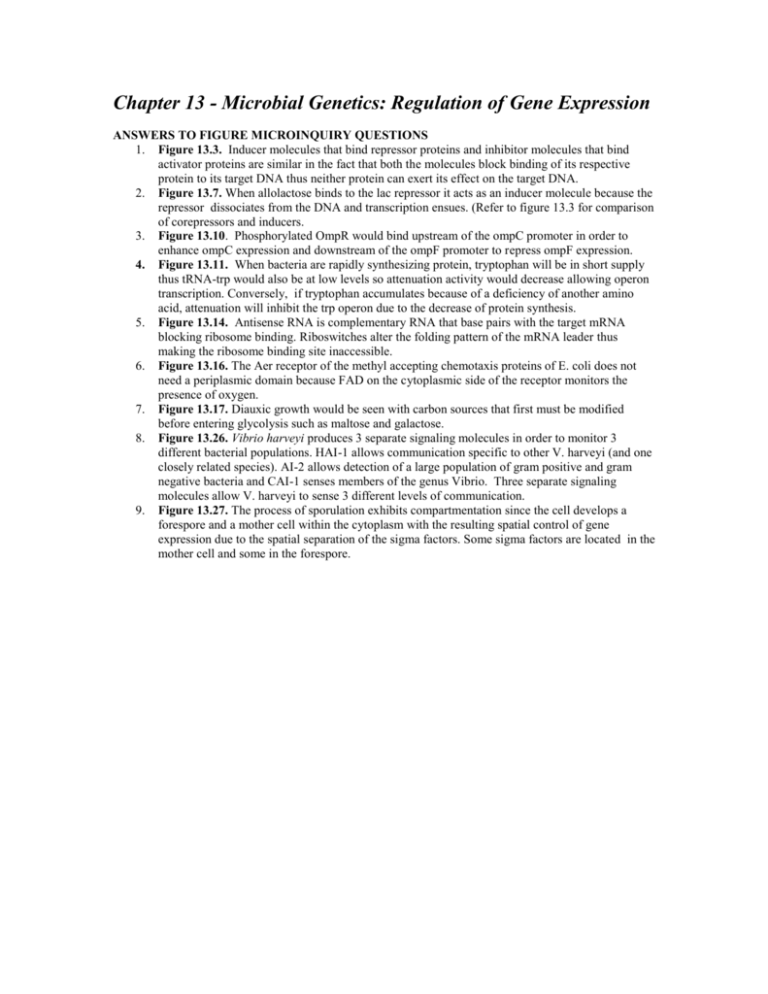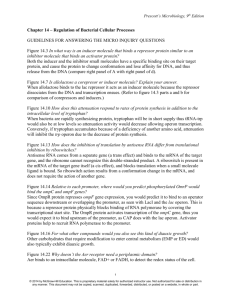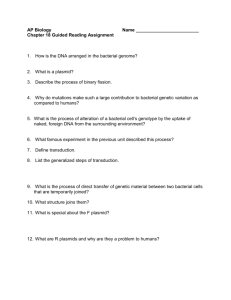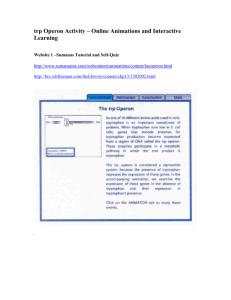Chapter 13 - Microbial Genetics: Mechanisms of Genetic Variation
advertisement

Chapter 13 - Microbial Genetics: Regulation of Gene Expression ANSWERS TO FIGURE MICROINQUIRY QUESTIONS 1. Figure 13.3. Inducer molecules that bind repressor proteins and inhibitor molecules that bind activator proteins are similar in the fact that both the molecules block binding of its respective protein to its target DNA thus neither protein can exert its effect on the target DNA. 2. Figure 13.7. When allolactose binds to the lac repressor it acts as an inducer molecule because the repressor dissociates from the DNA and transcription ensues. (Refer to figure 13.3 for comparison of corepressors and inducers. 3. Figure 13.10. Phosphorylated OmpR would bind upstream of the ompC promoter in order to enhance ompC expression and downstream of the ompF promoter to repress ompF expression. 4. Figure 13.11. When bacteria are rapidly synthesizing protein, tryptophan will be in short supply thus tRNA-trp would also be at low levels so attenuation activity would decrease allowing operon transcription. Conversely, if tryptophan accumulates because of a deficiency of another amino acid, attenuation will inhibit the trp operon due to the decrease of protein synthesis. 5. Figure 13.14. Antisense RNA is complementary RNA that base pairs with the target mRNA blocking ribosome binding. Riboswitches alter the folding pattern of the mRNA leader thus making the ribosome binding site inaccessible. 6. Figure 13.16. The Aer receptor of the methyl accepting chemotaxis proteins of E. coli does not need a periplasmic domain because FAD on the cytoplasmic side of the receptor monitors the presence of oxygen. 7. Figure 13.17. Diauxic growth would be seen with carbon sources that first must be modified before entering glycolysis such as maltose and galactose. 8. Figure 13.26. Vibrio harveyi produces 3 separate signaling molecules in order to monitor 3 different bacterial populations. HAI-1 allows communication specific to other V. harveyi (and one closely related species). AI-2 allows detection of a large population of gram positive and gram negative bacteria and CAI-1 senses members of the genus Vibrio. Three separate signaling molecules allow V. harveyi to sense 3 different levels of communication. 9. Figure 13.27. The process of sporulation exhibits compartmentation since the cell develops a forespore and a mother cell within the cytoplasm with the resulting spatial control of gene expression due to the spatial separation of the sigma factors. Some sigma factors are located in the mother cell and some in the forespore.











